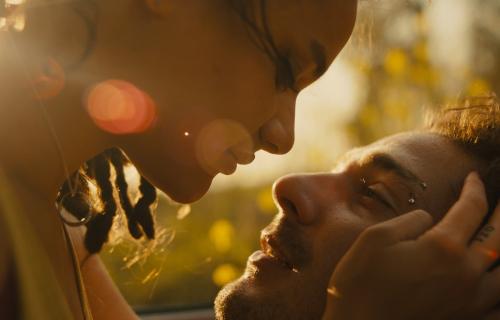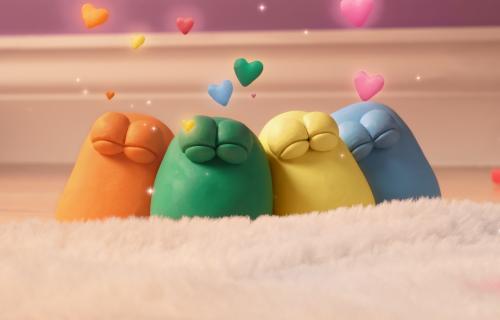
Rubens bracht een nooit geziene beweeglijkheid in de schilderkunst, maar wat gebeurt er wanneer de camera deze dramatische composities ook echt in beweging brengt? Dit filmprogramma zoekt een antwoord op deze vraag aan de hand van drie invloedrijke kunstfilms die via Rubens’ werken het potentieel van het filmmedium onder de loep nemen.
In 1938 maakten René Huyghe en Jacques Jaujard Rubens et son temps (1938), een van de eerste kunstdocumentaires in kleur. Als conservator van schilderijen in het Louvre erkende Huyghe het potentieel van film voor kunstanalyse: “De film stelt ons in staat de blik van de toeschouwer vast te houden en hem stap voor stap door de beschrijvende en visuele details van een kunstwerk te leiden.” De prijswinnende film Rubens (1948) van Paul Haesaerts en Henri Storck ging nog verder in zijn formele analyse van Rubens’ oeuvre. Door een genereus gebruik van cinematografische technieken brengt deze film Rubens’ picturale wereld tot leven met vaak opvallende vergelijkingen met beeldmateriaal uit de werkelijkheid. Mediakunstenaar Grahame Weinbren nam exact Rubens’ nauwkeurige observaties en realistische schetsen naar levende modellen als onderwerp van The Lions of Peter Paul Rubens (2008), een gefilmde studie van Rubens’ Daniël in de leeuwenkuil (1614-1616), in opdracht van de National Gallery of Art in Washington DC.
Het filmprogramma wordt ingeleid door Prof. Dr. Steven Jacobs (Universiteit Gent, Universiteit Antwerpen).
Voorafgaand vindt een Keynote lezing plaats van Prof. Dr. Joseph Imorde (University of Siegen/ Weissensee School of Art and Design Berlin) over de impact van de ‘alomtegenwoordigheid’ van mechanische reproducties rond 1900 voor de studie en appreciatie van kunst.
Dit filmprogramma maakt deel uit van het symposium Rubens in the Age of Mechanical Reproduction: (Un)packing the Rubenianum Library (9 en 10 februari 2023), georganiseerd door Dra. Griet Bonne (Universiteit Gent) in het Rubenianum en De Cinema, Antwerpen. Meer info en registratie: https://www.ugent.be/lw/nl/rubens. Contact: griet.bonne@ugent.be
Let op: bij het inschrijvingsgeld voor het symposium is een ticket voor dit filmprogramma inbegrepen.
__________________________________________________________________________________
Program below
With his unpreceded representation of movement, Rubens literally moved painting into a new direction. But what happens when the camera actually sets his dramatic composition in motion? This film program explores the potential of cinema to visualize art in three landmark Rubens-films.
In 1938, René Huyghe and Jacques Jaujard made Rubens et son temps (1938), one of the first art documentaries in color. As Louvre’s chief curator of paintings, Huyghe acknowledged the medium’s potential for art analysis: “The film enables us to hold the spectator’s eye and guide it step by step through the descriptive and visual detail of a work of art.” The award winning film Rubens (1948) by Paul Haesaerts and Henri Storck went even further in its formal analysis of Rubens’ oeuvre. Through a generous use of cinematographic techniques, the film animates Rubens’ pictorial world into a cinematic reality with often striking comparisons to contemporary footage. Media artist Grahame Weinbren took exactly Rubens’ accurate observations and realistic sketches from live models as the subject of The Lions of Peter Paul Rubens (2007), a filmed study of Rubens’ Daniel in the Lions’ Den (1614-1616), commissioned by the National Gallery of Art in Washington DC.
Introduction by Prof. Dr. Steven Jacobs (Ghent University/University of Antwerp)
The film program will be preceded by a keynote lecture by Prof. Dr. Joseph Imorde (University of Siegen/ Weissensee School of Art and Design Berlin) on the impact of the ubiquity of mechanical reproductions around 1900 for the study and appreciation of art.
This program is part of the symposium Rubens in the Age of Mechanical Reproduction: (Un)packing the Rubenianum Library (9 and 10 February, 2023) organized by PhD student Griet Bonne (Ghent University) at the Rubenianum and De Cinema, Antwerp. More information and registration: https://www.ugent.be/lw/nl/rubens. Contact: griet.bonne@ugent.be
Note: the registration fee for the symposium includes a ticket for this film screening.
__________________________________________________________________________________
19:00 Introduction by Griet Bonne (Ghent University)
19:10 Keynote lecture by Joseph Imorde (University of Siegen, Weissensee School of Art and Design Berlin)
How to Enjoy Reproductions: Some Historical Indications
19:50 Q&A and Break
20:15 Introduction by Steven Jacobs (Ghent University, University of Antwerp)
20:30 René Huyghe and Jacques Jaujard, Rubens et son temps, 1938, 11’
Paul Haesaerts and Henri Storck, Rubens, 1948, 61’ 17”
Grahame Weinbren, The Lions of Peter Paul Rubens, 2008, 10’
Q&A with Grahame Weinbren



